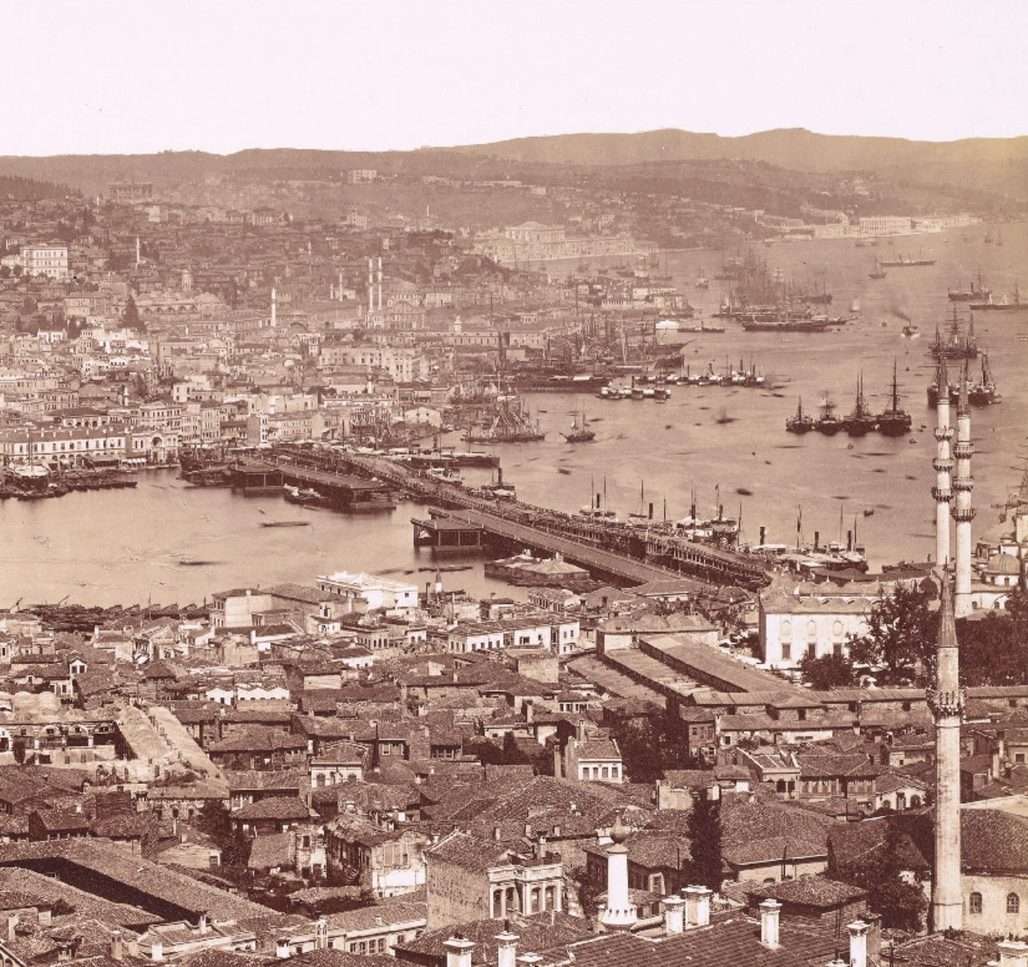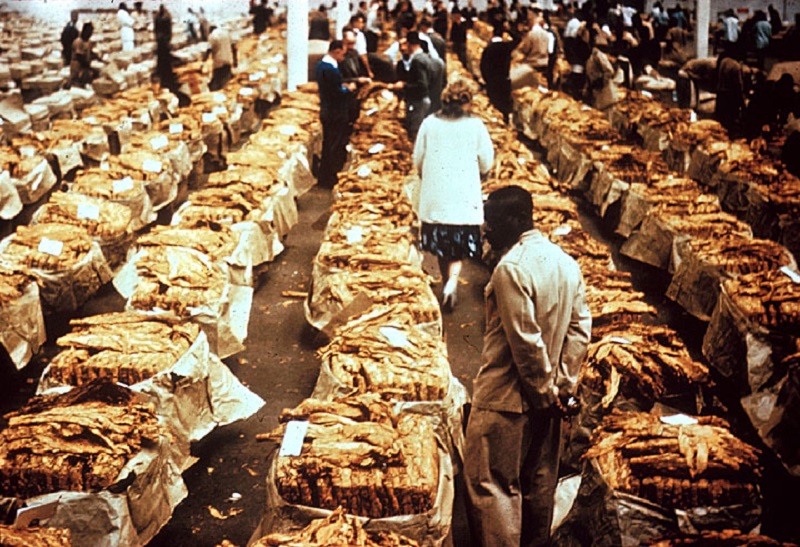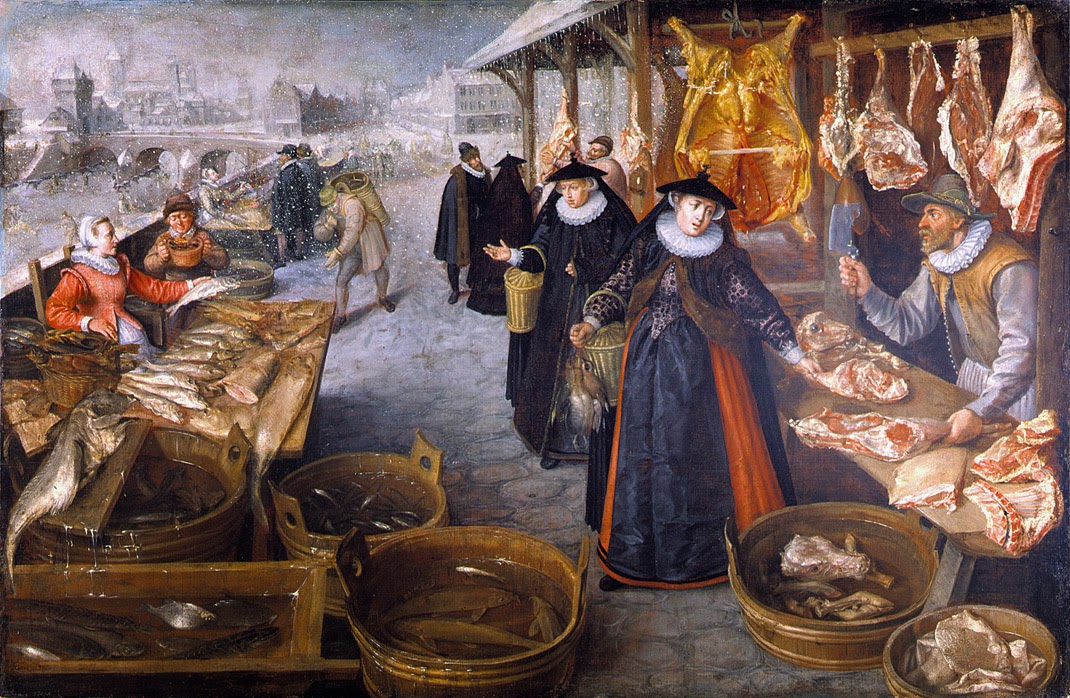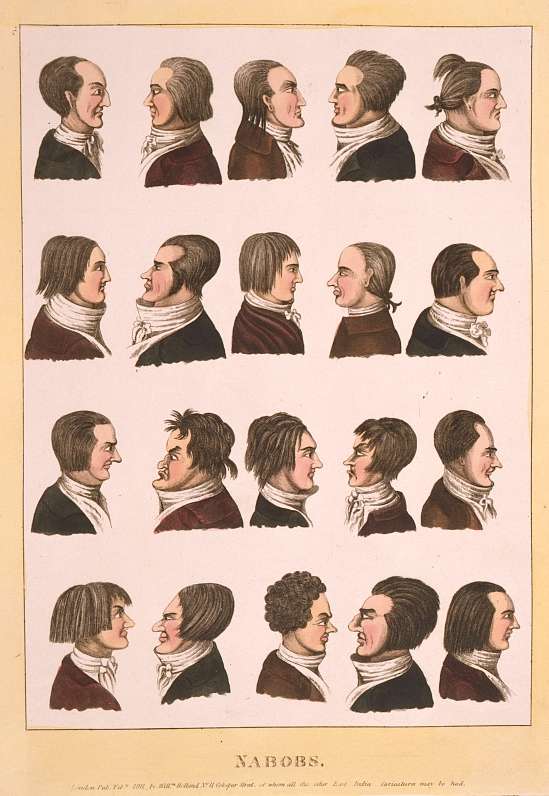The Careers of Commercial Capital
Jairus Banaji’s A Brief History of Commercial Capitalism (Haymarket, 2020)

Anyone familiar with the impressive scope of Jairus Banaji’s work and its binding commitments to theoretical rigor in Marxist history-writing will be pleased to spend time with his latest primer on what has become a long-time preoccupation, A Brief History of Commercial Capitalism. “Commercial” or “merchant capitalism” confers a conceptual unity on the truly dizzying array of secondary historical sources commanded by this deceptively svelte exercise in global economic history. The book’s point of view (and polemic) evaluates the merits of Marxist theory from the non-marxist historiography of commercial capital, rather than vice-versa. Put simply, does the law of value hold analytic purchase over the deep history of planetary commercial networks, from fifteenth-century Greek-Byzantine merchants to the urbanized, mercantile republics of the Italian peninsula? Banaji makes clear both Marx’s own ambivalent (yet productive) attitude on merchant capital (a formation Marx nevertheless considered “pre-capitalist,” though in Banaji’s eyes, he recognized the complicated, primordial relations between trade, finance, agriculture, and industry) and the unfortunate “prostration before Stalin” identifiable in the subsequent strain of Marxist history-writing that privileges industrial capitalism over the neglected “sphere of circulation”. Banaji seeks to correct this ceding of historiographical ground to non-Marxist (R. H. Tawney, Geoffrey Ingham, Cain & Hopkins) and even neo-classical/-institutional (R. Bin Wong) economic history.
Chapter 1 introduces the historiography of commercial capitalism and a top-level view of Banaji’s framework; Chapter 2 describes the material “infrastructure” of colonies, market institutions, and bills of credit that enable commercial capital’s circulation; Chapter 3, on the competition of capitals, sets the historical scene with a millennial retrospective on the careers of commercial capital from the Byzantine empire to Hanoverian Britain; a more in-depth look at the institutional peculiarities of the what amounts to the apotheosis of merchant capital in its nineteenth-century, Victorian guise is offered in Chapter 4; the “commercial practices” examined in Chapter 5 brings Banaji’s conceptual vocabulary to bear on the old debates of “proto-industry” surrounding the Verlag system; the final chapter concludes with a distinctively Marxist synthesis (with full use of value categories) of commercial capital’s laws of motion. So, the chapters transition between empirical case studies of early commercial empires (think Braudel’s third level of world capitalism) to theoretical interregnums that burrow into the microeconomic tranches of individual trading firms and brokerage entities. A full consideration of the richness of Banaji’s contribution is beyond the scope of a review essay; what follows instead is a necessarily partial commentary on the most provocative (and in my view problematic) aspects of the book. Due to the reviewer’s comparative lack of historical erudition, much of the discussion is confined to early-modern Europe.
At the outset, Banaji hones in on a key tension in Marx’s conflation of the capacity of merchant capitalists to “dominate production directly” (Marx’s examples are trans-Atlantic colonial system and the territorial adventures of the Dutch East India Company) and the “transformation of the merchant into an industrial capitalist” (as in the case of rural putters-out). On this balance-sheet, commercial capital seems at once an active, transforming agent in the sphere of production, but also self-liquidating, midwifing the true dynamism of industrial capital in the “transition to capitalism” sequence. It is this latter “Stalinist” industrial teleology that Banaji rejects or at least relegates to the late nineteenth-century with the contingent emergence of “the manufacturer who exported directly to distant markets”. Instead, he argues that, for vast swathes of the history of capitalism, commercial and trading companies have acted — by their control of wholesale and money markets and by their vertical integration of production (Chayanov) — as the prime-mover in the “capitalist penetration” of traditional societies through the subsumption of “rural households and their labor powers.” These operations, moreover, generated global competitive pressures that witnessed patterns of concentration and centralization typically associated only with the era of industrial capital. If Banaji is right, then the false antithesis between production and circulation animating formalist Marxist historiography can no longer be sustained; indeed, he points to the persistence of commercial capital today in firms like Unilever and Uber in contradiction to charges of its self-liquidation.
Banaji’s historical sweep astounds in Chapter 2. His is a pointillist canvas of trading factories of both the port and inland variety (fanfang in eleventh-century Guangzhou, Venetian fondigoes in twelfth-century Constantinople, trading maisons of Spanish Jews in Smyrna) and great, single-commodity marts (coral in twelfth century Ceuta, flax and spices in medieval Alexandria, sixteenth-century Iranian silk in Aleppo, cotton in Mirzapur, opium in Patna, Levantine tobacco in Salonica, slave yards in Kingston, Kilwa, and Luanda) which dotted the imperial flanks of the world’s oceanic littorals. Three elemental ingredients compose this globe-trotting “infrastructure”: trading colonies (enabling the physical mobility of commercial agents), wholesale markets (enabling both trade volume of bulk goods and the large-scale centralization and concentration of merchant capital), and discountable bills of exchange (enabling international liquidity through the creation of means of payment as paper credit). There is also fascinating cultural fill: these precocious, polyglot hubs of overseas trade facilitated religious tolerance between Muslims, Jews and Christians, inter-ethnic and -religious marriages, and even “vanguard philosophies.” Banaji convincingly traces the pre-history of modern commercial and financial contractual techniques (so often associated with the Italian trading republics) to the Arab and Indian Ocean worlds.

Though it dispenses with any lingering eurocentrism, there is good reason to qualify the commodity logic of Banaji’s presentation of commercial capitalism as a cosmopolitan bazaar timelessly orchestrated by savvy merchant networks and anonymous bills of exchange. Christopher Bayly writes that while “the rationale underlying global networks for much of the population of Mediterranean Europe, Asia, and Africa in 1750 bore some similarities to those that had existed five or even ten centuries earlier,” the early-modern, proto-capitalist Atlantic-based globalization (which saw, above all, the commodification of slave labor for plantation complexes) exhibited a fundamentally different logic from, and was parasitic on, earlier linkages established by “archaic globalization” since classical antiquity. Three principles underlay archaic globalization: universalizing kingship, the expansive urge of cosmic religion, and humoral/biomoral understandings of bodily health. In particular, the register of bodily practice bears directly on Banaji’s characterization of early markets:
The world’s biomedical systems—from the Greek, Islamic, and Hindu through to Daoist and Confucian—overlapped. Specialists read each other’s texts. They sought out similar spices, precious stones, and animal products that were thought to enhance reproduction, sex, and bodily health. These prized commodities, drawn from across the world, were believed to have the magical property of transforming human substance, health, and fortune. To this extent, they can be called “biomoral” products. They were not simply items of consumption, which marked the outward status and wealth of individuals, as in modern “trophy” consumption. Along with markers of royalty, such as precious metals, weapons, and horses, the search for prized “medicines—biomoral products—imposed deep patterns on world trade and the movement of peoples.
Banaji wants to prove, by evidence of trade volume and market size, the capitalist nature of commercial circulation. However, the tea, tobacco, and opium exchanged in the ancient Indian and south Chinese overseas trades were in fact “biomoral products and tokens of kingship”; despite the size of their markets, they did not become commodities of leisurely — let alone mass — consumption until the seventeenth century. Likewise, the great, archaic marts for slaves in port cities lining the Indian ocean dealt not with commodified abstract labor, but rather with charismatic military and servile tokens that kingly heads of households strategically amassed in the African and Ottoman worlds. Although highlighting capitalist novelty (“a new proliferation of commercial capital as industrial accumulation), the ease with which Banaji moves between archaic and proto-capitalist globalization — a primordial flow of money one way and goods the other — obscures the shifting nature of commercial capital in transition.
The rise of chartered trading companies and adversarial commercial imperialism is also projected into the distant past in Chapter 3. Telescoping centuries of national and imperial political histories into a primal search for markets and colonial wars, “Greek capital” was “subordinated” to Byzantine commerce just as the British EIC won hegemony over the Dutch VOC; indeed, Humean jealousy of trade was hardly an early modern phenomenon: “the idea that ancient and medieval writers were oblivious to the play of economic forces…does not stand up to scrutiny.” Banaji sees nothing less than an eleventh century bourgeois revolution in Byzantium as “a strictly aristocratic model of government split wide open to allow the popular classes and commercially active strata…access…to the senate and higher administration.”
Unfortunately, much of capitalism’s political history gets lost in Banaji’s tendency to downplay politics and ideology.This is especially true of his characterization of the British East India Company, as discussed below.
Just as violence or coercion in economic competition, strategic political alliances between absolutist or royal ministries and the middling, commercial strata against aristocratic grandees is commonplace in the history of centralizing states. In his discussion of the “imperfect ‘royal capitalisms’ of Iberia,” Banaji himself makes note of a “curious mixture of mercantilism and messianism” exhibited by Portugal’s fourteenth-century expansion, in which Reconquista religious zeal exited alongside hierarchic Iberian notions of casta or raza. Capitalism appears the minor partner in this archaic enterprise.

The sixteenth-century Dutch republican revolution against Philip II’s Spanish-Habsburg rule marks the beginning of another competitive transformation of commercial capital, in the form of the company-state. Unfortunately, owing to Jonathan Israel, Banaji’s account — the entry of a federated Dutch Republic into its seaborne “Golden Age” humming with Rembrandt’s money-changing burghers — largely mischaracterizes the rise of Dutch capitalism, which actually gives more challenge than support to the book’s thesis. Specifically, Banaji is able to defend the prime-mover status of commercial capitalism only by omitting the agricultural preconditions of the Dutch case. Jan de Vries has urged against this belief that “the urban, trading economy of the Dutch Republic functioned independently from the agriculture of its hinterland.”Jan De Vries, and Ad Van der Woude, The first modern economy: Success, failure, and perseverance of the Dutch economy, 1500–1815 (Cambridge: Cambridge University Press, 1997).
As Robert Brenner shown, the origins of the Dutch breakthrough lay the unintended ecological consequences of the progressive conversion of the low-lying peat soils of the northern Netherlands into grain agriculture in the late Middle Ages.Robert Brenner. “The Low Countries in the transition to capitalism.” Journal of Agrarian Change 1, no. 2 (April 2001): 169-241
This process led to a settling of the peat and a rise in the moisture content of the soil that rendered the land unfit for the production of bread grains. To this, de Vries adds that the northern and coastal regions were perennially exposed to flooding and issues of water management. This hydrographic situation led not only to urban growth (such as in Amsterdam), but also the communal organization of rural society. By 1500, a new urban, merchant culture in the north tapped the “bulk trades” of the Baltic — above all Polish grain and North Sea fisheries — for cheap, food imports that enabled farmers to break the resource limits of a low-productivity monocrop grain economy. They turned toward cattle farming (initiating productivity-increasing manure feedbacks), dairying and winter fodder crops (a nitrogen-restoring technique), and gradually specialized in food products for the rich urban consumption (cheese, butter, meat, barley, hops) while at the same time gradually losing the option of subsistence. Commercial capital in the Low Countries and the Dutch 1566 bourgeois revolt both had deep rural roots; only from a uniquely water- and agriculturally-challenged ecology could the Dutch dual economy eventually emerge.
Turning now to the other early-modern bourgeois society, Britain, “[s]tate and capital now had a unifying ‘national’ interest in securing or retaining commercial dominance” in the form of the trading company. On the British EIC, Banaji faults John Brewer’s summing up of the company as “privatized imperialism” with insufficient recognition of the capitalist character (in terms of structural organization and business model) of the company. As Banaji earlier shows, the Dutch VOC — under the competitive challenge of private Asian merchants — had already gone well beyond simply buying cheap and selling dear by inserting on-the-ground agents into local commercial networks to subordinate rural producers for production for exporton the world market (such as the VOC silk-reeling factory at Kasimbazar in Bengal). The EIC further penetrated production and intensified its organization of colonial value chains in Bengal: “a series of regulations…sought to reduce weavers to the status of Company employees, with restrictions on their mobility, tighter supervision of looms, and more overtly coercive use of debt.” Yet, Banaji’s history of the monopolized commerce of the EIC conflates its operation with “the competition of private, mostly English, merchants.” In doing so, he unwittingly subscribes to a Namierite viewNamierites view the period of British politics from 1688 (having felled Stuart absolutism with the help of the Dutch) to 1789 as an era largely free of any major political or social differences in ideology or outlook, dominated by Whig magnates jockeying for intra-elite wealth and status. In Lewis Namier’s words: “Men went [into Parliament] ‘to make a figure,’ and no more dreamt of a seat in the House in order to benefit humanity than a child dreams of a birthday cake that others may eat it.”
of the Empire’s political history that renders difficult any explanation of why the free merchants, “this layer of capital” were finally able to “destroy the monopoly of the East India Company in the nineteenth century.”

As Brenner’s painstaking research has shown, the free “interloping” merchants’ political challenge to the haute monopoly traders, intermixed with the traditional constitutional and religious disputes initiated by religious Independents, parliamentary Radicals and the New Model Army, played key role in the English Revolution and Commonwealth period (1658-1653). The world of unregulated Atlantic and East Indian interloping was sociologically and politically apart from and set against the anti-competitive, restricted patronage networks of the Levant and East India Company.Robert Brenner, Merchants and Revolution: Commercial Change, Political Conflict, and London’s Overseas Traders, 1550-1653 (Princeton: Princeton, 1993).
Steve Pincus reminds us these fundamental battle lines persisted well into the eighteenth century, as the Tory directors of the EIC such as Josiah Child (who’s quoted in Banaji) espoused an authoritarian and extractive vision of territorial imperial expansion, against which a Patriot Whig opposition argued for free commerce, free labor and state investment, modelled on the American colonies and the liberties achieved by the Glorious Revolution (1688) settlementSteve Pincus, “Rethinking mercantilism: political economy, the British empire, and the Atlantic world in the seventeenth and eighteenth centuries,” The William and Mary Quarterly 69, no. 1 (January 2012): 3-34.
. The apotheosis of the Tory vision arrived in 1765, when the Mughal Emperor Shah Alam II granted Robert Clive, Baron of Plassey the diwani (the right to collect land revenues in the provinces of Bengal, Bihar,and Orissa), effectively consolidating a territorial, fiscal-military dominion on the Indian subcontinent. To the chagrin of private merchants, the new reactionary garrison-state promoted a military rule that, blocking both indigenous and British private enterprise, imposed zero-sum tributary relations for remitting revenue back to its grandee board of “Nabobs”. Contested in parliament by successive Whig offensives that wanted nothing short of its wholesale liquidation,Most notably, Clive’s trial was instigated at the behest of the Rockingham Whig, Edmund Burke.
the unsustainable Tory political economy of the EIC experienced a series of debt crises and ministerial bailouts in the form of loans and grants, culminating in the infamous 1773 Tea Act promulgated by the North ministry, a move that triggered nothing less than bourgeois revolution in the New World.The Tea Act aimed to restore the EIC’s profitability by letting it unload its unsold, warehoused inventories by exporting tea directly to monopolized markets in the North American colonies. This, of course, instigated direct action by the Boston Sons of Liberty.
By bracketing the political history of the Company, Banaji risks losing sight of the Janus-face nature of the EIC’s political economy — at times profoundly neo-feudal and at the expense of the free circulation of commercial capital. In this reviewer’s opinion, Banaji has the habit of back-projecting the golden age of Victorian commercial capital (Chapter 4; where he is on surer footing).Marshalling evidence from a plethora of City of London merchant firms and agency houses in the jute, coal, tea, and rubber trades, Chapter 4 tracks the evolution of merchant capital into Hilferdingian capitalists, retaining ownership equity on various subsidiaries floated on British capital markets and “consolidating their hold over entire sectors of the economy.”
As astute and critical a theorist of incipient bourgeois, commercial society as Adam Smith could, in 1776, write that: “The miserable effects of [opening the India trade] the Company [complains], are the cheapness of consumption [of India goods in Britain] and the encouragement given to production [by an expansion of competition in India].” The monopoly position of the Company stood in fundamental tension with “the two effects which it is the great business of political economy [and of Smith’s cherished Empire of Liberty] to promote,” namely cheapening consumption and expanding production.Adam Smith, An Inquiry into the Nature and Causes of the Wealth of Nations (London: Strahan and Cadell, 1789).
Contemporaries grasped how bourgeois revolution is as much economic as governmental.Neil Davidson, How Revolutionary Were the Bourgeois Revolutions? (Chicago: Haymarket, 2012).
In 1755, a good Whig like Josiah Tucker could bemoan: “We still want the Glorious Revolution in the commercial system, which we have happily obtained in the political.”Josiah Tucker, The Elements of Commerce and Theory of Taxes (London: 1755), 88-9.
Tucker and Smith’s pleas for radical change in the structure of eighteenth-century British commerce appear at odds with Banaji’s global history. Did capitalism even need bourgeois revolution, as timeless and progressive a force as commercial capitalism is? If not, why was it only in England and Western Europe (and not elsewhere) that the exploitation of wage-labor could generalize itself so that the City of London became the global headquarters of capitalist imperialism in the Victorian age? Banaji’s history of capitalism, while successfully barring the way back to a provincial eurocentrism, enters troubling political territory from a Marxist perspective. Part and parcel of his denial of the Stalinist experience, Banaji’s dissenting view on the historical inevitability of industrial mass production brings him into contact with Michael Piore and Charles Sabel’s Second Industrial Divide, in which the two political scientists argued that, against Marx, the victory of mass production (unskilled workers and labor-saving automated processes) over craft production (skilled workers engaged in the flexible production of specialized goods) was the contingent outcome of political and social choices.
Chapter 5 on the Lyonnais silk industry could have come straight out of Piore and Sabel. The highly skilled fabricants of the subcontracting-industrial complex centered in eighteenth century Lyons dominated the high-end of the European consumer market. Their continued, successful challenge — through market knowledge flexible specialization in terms of materials, patterns, and construction to ever-shifting demand for the latest fashions — to burgeoning factory/standardized production of silk in the British Isles marked, for Banaji, “the totalizing role of merchant’s capital in putting the [silk] industry together and securing its dominance.” Indeed, this species of small-scale, artisanal production in the Lyons only met its demise in the 1960s when the Gaullist state initiated a policy around on mergers and restructuring.
Banaji opens up an “anti-necessitarian” alternative historical path.There are undertones of the views of the “late” Marx who, repudiating his youthful, “necessitarian” celebrations of the progressive unfolding of maturing capitalism (running roughshod over superseded modes of production in traditional societies worldwide), saw the survivals of a primitive communism in the rural Russian mir. If only, in 1921, the Bolsheviks had maintained the coalition with the Makhnovists against the Whites and fostered the re-emergence of the mirs, they would not have alienated the peasant class and, consequently, required Stalinist liquidation!
Roberto Unger, a fellow traveler, has unabashedly endorsed the “tradition of petty bourgeois radicalism” of a Proudhon. But Proudhon’s civil society of small proprietors, equal exchange, and “simple commodity production” is very far from Marx. Interestingly, Banaji’s only mention of plebeian struggle is the Ciompi Revolt of Florentine wool workers (1378). As Neil Davidson puts it: “For as long as class societies have existed, human beings have dreamed of and fought for a world without inequality. But these attempts were impossible to consummate as long as the historical basis of inequality, relative material scarcity, prevailed.”Davidson, How Revolutionary Were the Bourgeois Revolutions?
The great European cycle of bourgeois revolutions ushered in, for the first time in world history, productive forces capable of overcoming scarcity. It is the epochal legacy of bourgeois revolution and the achievement of bourgeois society — that contradictory whole of both unprecedented freedom in potentia and hitherto unseen levels of violent expropriation — that Marxist politics must contend with. It is, after all, the path that history did in fact take, and we need not be Stalinist necessitarians to admit it.
FRA is a slave of some defunct economist.
